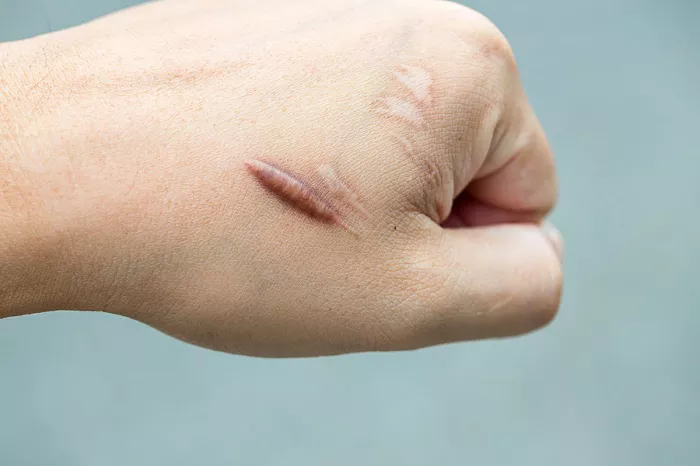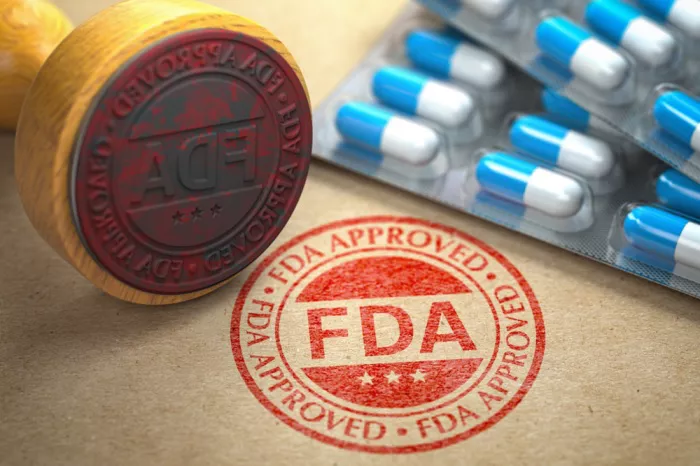Peklat, or scars, can be a common concern for individuals seeking to minimize the appearance of skin blemishes. While professional interventions are available, exploring home remedies for peklat offers a natural and cost-effective approach. In this comprehensive guide, we delve into various home remedies, understanding the factors contributing to scar formation, and exploring effective ways to promote skin healing and reduce the visibility of peklat.
Understanding Peklat
Before delving into home remedies, it’s crucial to understand how scars, or peklat, form. Scars are a natural part of the body’s healing process, occurring when the skin repairs itself after an injury, wound, or surgical incision. The type of scar that develops can vary, and factors such as genetics, wound depth, and skincare play a role in the scar’s characteristics.
Types of Scars:
Scars can manifest in different forms, and understanding the types of scars is essential for choosing appropriate home remedies. Common types include:
Keloid Scars: These scars extend beyond the original wound and can be raised and thick.
Hypertrophic Scars: Similar to keloid scars but typically remain within the boundaries of the wound.
Atrophic Scars: These include ice pick, boxcar, and rolling scars, often associated with acne.
Contracture Scars: Resulting from burns, these scars cause tightening of the skin and may impact mobility.
Factors Contributing to Scar Formation:
Several factors influence how scars form, and understanding these factors helps in developing effective home remedies. Key contributors include:
Wound Depth: Deeper wounds are more likely to result in noticeable scars.
Age and Genetics: Younger individuals may have a more robust healing response, and genetics play a role in scar formation.
Skin Type: Different skin types respond differently to injuries, affecting scar appearance.
Infection and Inflammation: Infections and prolonged inflammation can contribute to scar formation.
Home Remedy and Peklat
While complete elimination of scars may not be achievable through home remedies alone, various natural solutions can contribute to minimizing their appearance and promoting overall skin health.
Aloe Vera Gel:
Aloe vera gel is a well-known remedy for promoting skin healing and reducing inflammation. Applying pure aloe vera gel to peklat regularly may help soothe the skin, improve its texture, and contribute to scar reduction.
Coconut Oil:
Coconut oil contains fatty acids with moisturizing properties that can benefit the skin. Massaging coconut oil into peklat may help soften and hydrate the scar tissue, potentially reducing its visibility over time.
Lemon Juice:
Lemon juice, rich in vitamin C and natural acids, is believed to have mild exfoliating properties. Applying fresh lemon juice to peklat and allowing it to sit for a few minutes before rinsing may help in reducing discoloration and promoting a more even skin tone.
Honey:
Honey is known for its antibacterial and wound-healing properties. Applying a thin layer of honey to peklat and covering it with a bandage creates a conducive environment for skin healing. Manuka honey, in particular, is praised for its potent antibacterial effects.
Rosehip Seed Oil:
Rosehip seed oil is rich in vitamins and antioxidants, promoting skin regeneration. Gently massaging rosehip seed oil into peklat may help improve skin texture and reduce the appearance of scars.
Onion Extract:
Onion extract is believed to have scar-reducing properties. Topical creams containing onion extract may be applied to peklat to aid in scar reduction. While evidence is limited, some individuals report positive results with consistent use.
Lavender Oil:
Lavender oil is known for its soothing and skin-regenerating properties. Diluting lavender oil with a carrier oil and applying it to peklat may contribute to overall scar reduction. It’s important to perform a patch test to ensure compatibility.
Cucumber:
Cucumber is hydrating and contains antioxidants. Applying cucumber slices or cucumber juice to peklat may have a soothing effect on the skin and contribute to scar reduction, especially in the case of fresh scars.
Lifestyle Practices for Scar Reduction
In addition to home remedies, certain lifestyle practices can support the body’s natural healing processes and contribute to scar reduction.
Hydration:
Proper hydration is essential for overall skin health. Drinking an adequate amount of water helps maintain skin elasticity and supports the body’s natural regeneration processes.
A well-balanced diet rich in vitamins and minerals is crucial for skin health. Foods containing vitamin E, vitamin C, zinc, and antioxidants contribute to the body’s ability to repair and regenerate tissues.
Avoiding Sun Exposure:
Prolonged sun exposure can exacerbate the visibility of scars. Applying sunscreen to peklat and surrounding skin helps protect against UV damage and promotes scar reduction.
Gentle Massage:
Gentle massage of the scarred area may help improve blood circulation and promote tissue flexibility. Using a mild, hypoallergenic oil or cream during the massage can contribute to a comfortable experience.
Regular Exercise:
Regular exercise promotes overall circulation and contributes to skin health. Engaging in activities that support cardiovascular health may indirectly benefit scar reduction.
Home Remedy and Peklat
While home remedies can contribute to scar reduction, it’s important to have realistic expectations and understand their limitations. The effectiveness of home remedies may vary among individuals, and results may take time to become noticeable.
Effectiveness on Fresh Scars:
Home remedies may be more effective on fresh scars, as the skin’s healing processes are still underway. Consistent application and adherence to a skincare routine enhance the likelihood of positive outcomes.
Challenges with Older or Deep Scars:
Older or deeper scars may be more challenging to address solely with home remedies. In such cases, seeking professional advice is advisable, as dermatological procedures may be required.
Patience and Consistency:
Achieving visible results with home remedies requires patience and consistent application. It’s essential to understand that scar reduction is a gradual process.
Combining with Professional Treatments:
For individuals with persistent or resistant scars, combining home remedies with professional treatments offers a comprehensive approach. Dermatologists can recommend procedures such as laser therapy, microneedling, or chemical peels.
Seeking Professional Advice:
If home remedies do not yield the desired results, or if there are concerns about scar characteristics, seeking professional advice is crucial. Dermatologists can assess individual skin conditions and recommend targeted interventions.
Professional Treatments for Scar Reduction
In cases where home remedies may not provide the desired results, or for individuals with more complex scar concerns, professional treatments offer advanced solutions. Dermatologists and skincare professionals can recommend the following interventions:
Laser Therapy:
Laser therapy uses targeted beams of light to break down scar tissue and stimulate collagen production. This procedure can be effective in reducing the appearance of scars, especially hyperpigmented or raised scars.
Microneedling:
Microneedling involves the use of tiny needles to create controlled micro-injuries in the skin. This process stimulates collagen production and promotes the formation of new, healthier skin.
Chemical Peels:
Chemical peels use chemical solutions to exfoliate the outer layer of the skin. This can be beneficial for addressing hyperpigmentation and improving overall skin texture.
Cryotherapy:
Cryotherapy involves the controlled application of extreme cold to the scar tissue. This method can be effective for reducing the size and visibility of certain types of scars.
Surgical Excision:
Surgical excision involves removing the scar tissue through a surgical procedure. This approach is often used for larger or more complex scars.
Long-Term Care and Monitoring
After implementing home remedies or professional treatments, individuals should adopt long-term care practices to sustain scar reduction and promote overall skin health.
Consistent Aftercare:
Following the recommended aftercare practices, whether provided by skincare professionals or derived from home remedy routines, is essential for sustained scar reduction.
Regular Follow-Ups:
Regular follow-up appointments with dermatologists allow for monitoring the scar’s progress, adjusting treatment plans as needed, and addressing any concerns.
Protecting from Trauma:
Protecting scarred areas from trauma is crucial. Avoiding unnecessary pressure, friction, or trauma to the scars helps prevent irritation and potential exacerbation.
Sun Protection:
Continued sun protection is essential for scarred areas. Applying sunscreen with a high SPF helps prevent hyperpigmentation and protects the skin from UV damage.
Maintaining Overall Skin Health:
Supporting overall skin health through proper hydration, a well-balanced diet, and lifestyle practices contributes to the body’s natural healing processes.
Addressing Individual Concerns and Expectations
Each individual’s experience with scar reduction is unique, and addressing specific concerns and expectations is integral to the process. Factors such as scar type, size, and individual responses to treatments vary, highlighting the importance of a personalized approach.
Pain Management:
Pain management is a significant aspect of scar care, especially after certain procedures. Over-the-counter pain relievers, as recommended by healthcare professionals, can help alleviate discomfort.
Aesthetic Considerations:
Aesthetic considerations are subjective and vary among individuals. Open communication with dermatologists about aesthetic preferences, including scar appearance and texture, allows for collaborative decision-making.
Realistic Expectations:
Having realistic expectations is crucial. Complete elimination of scars may not always be achievable, but significant improvement in appearance and texture can be anticipated.
Emotional Support:
The emotional impact of scars should not be overlooked. Seeking emotional support from friends, family, or support groups can provide valuable encouragement and understanding throughout the scar reduction journey.
Conclusion
In conclusion, the journey to scar reduction involves a multifaceted approach that combines home remedies, professional interventions, and ongoing collaboration with dermatologists and skincare professionals. While home remedies provide accessible and natural options for scar reduction, it’s essential to approach them with patience, consistency, and realistic expectations.
Understanding the factors contributing to scar formation, exploring lifestyle practices, and seeking professional advice when needed empowers individuals in their journey of scar reduction. Whether through aloe vera gel, coconut oil, or advanced treatments like laser therapy, individuals can work towards minimizing the appearance of scars while embracing a personalized and holistic approach to skin health.
[inline_related_posts title=”You Might Be Interested In” title_align=”left” style=”list” number=”6″ align=”none” ids=”3294,3292,3290″ by=”categories” orderby=”rand” order=”DESC” hide_thumb=”no” thumb_right=”no” views=”no” date=”yes” grid_columns=”2″ post_type=”” tax=””]

































